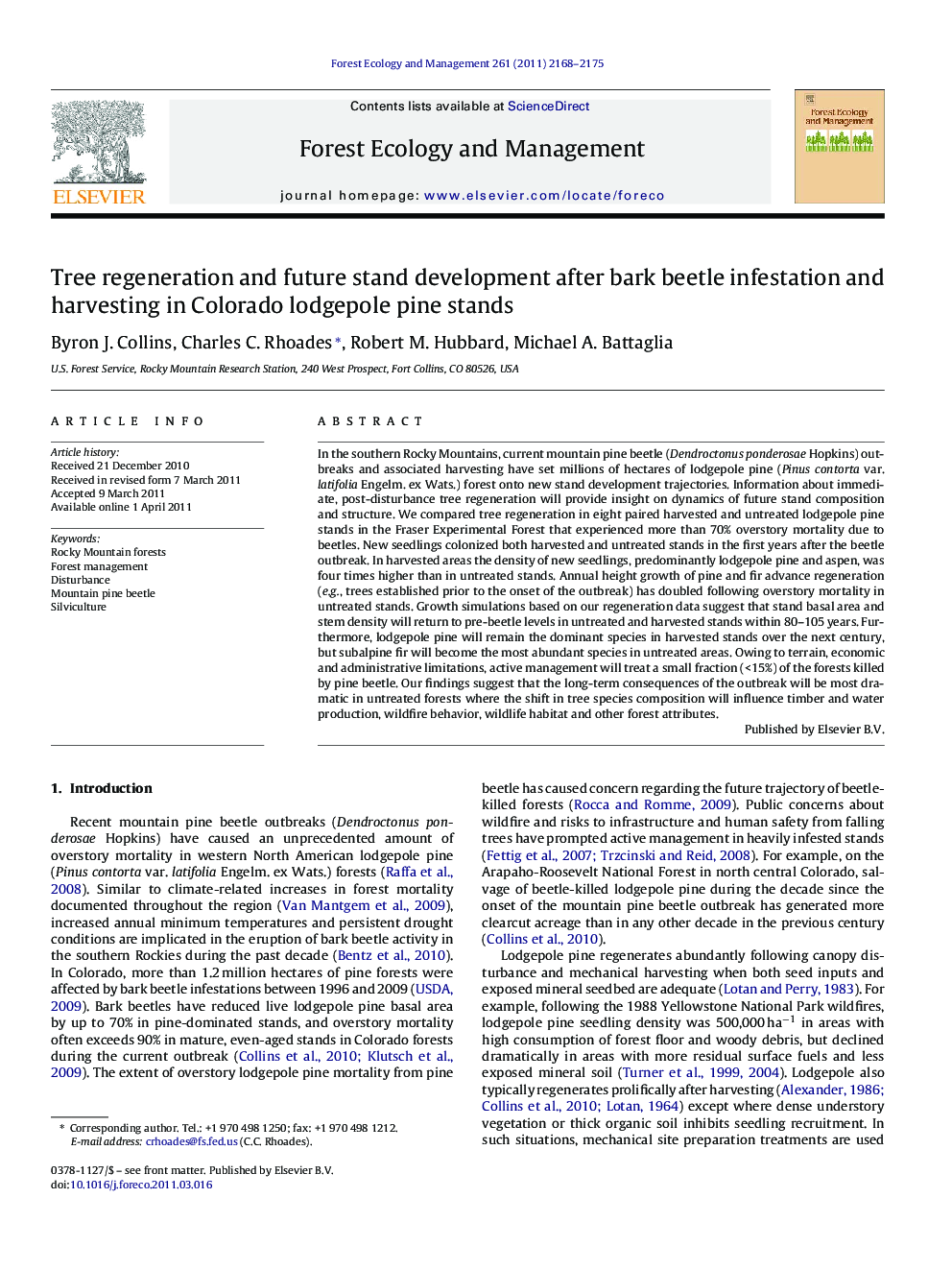| کد مقاله | کد نشریه | سال انتشار | مقاله انگلیسی | نسخه تمام متن |
|---|---|---|---|---|
| 87908 | 159270 | 2011 | 8 صفحه PDF | دانلود رایگان |

In the southern Rocky Mountains, current mountain pine beetle (Dendroctonus ponderosae Hopkins) outbreaks and associated harvesting have set millions of hectares of lodgepole pine (Pinus contorta var. latifolia Engelm. ex Wats.) forest onto new stand development trajectories. Information about immediate, post-disturbance tree regeneration will provide insight on dynamics of future stand composition and structure. We compared tree regeneration in eight paired harvested and untreated lodgepole pine stands in the Fraser Experimental Forest that experienced more than 70% overstory mortality due to beetles. New seedlings colonized both harvested and untreated stands in the first years after the beetle outbreak. In harvested areas the density of new seedlings, predominantly lodgepole pine and aspen, was four times higher than in untreated stands. Annual height growth of pine and fir advance regeneration (e.g., trees established prior to the onset of the outbreak) has doubled following overstory mortality in untreated stands. Growth simulations based on our regeneration data suggest that stand basal area and stem density will return to pre-beetle levels in untreated and harvested stands within 80–105 years. Furthermore, lodgepole pine will remain the dominant species in harvested stands over the next century, but subalpine fir will become the most abundant species in untreated areas. Owing to terrain, economic and administrative limitations, active management will treat a small fraction (<15%) of the forests killed by pine beetle. Our findings suggest that the long-term consequences of the outbreak will be most dramatic in untreated forests where the shift in tree species composition will influence timber and water production, wildfire behavior, wildlife habitat and other forest attributes.
► Seedlings colonized both harvested and untreated stands the first years after the outbreak.
► In harvest units, the density of new seedlings was four times higher than in untreated stands.
► Growth simulations suggest that lodgepole will remain the dominant species in harvested stands.
► Subalpine fir will likely become the most abundant species in untreated areas.
Journal: Forest Ecology and Management - Volume 261, Issue 11, 1 June 2011, Pages 2168–2175